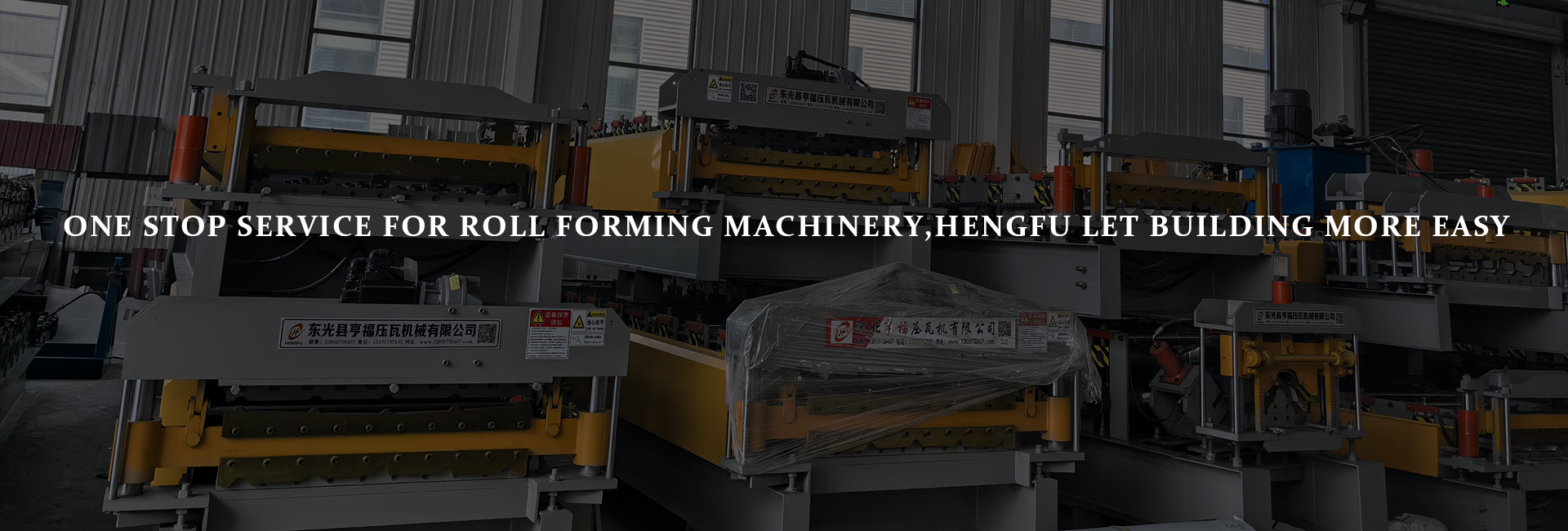In the metal roofing production segment of the construction industry, roof panel forming machines serve as core equipment. Their stable operation directly impacts construction progress and project quality. However, prolonged high-load operations inevitably lead to various malfunctions. Mastering troubleshooting methods for common faults enables users to swiftly restore equipment operation and reduce downtime losses. This article systematically organizes common faults of roof panel forming machines, providing detailed solutions to facilitate efficient production.
1. Introduction: The Importance of Troubleshooting Roof Panel Forming Machines
1.1 Market Demand for Metal Roofs and Equipment Dependency
With the widespread application of metal roofs in industrial plants, commercial buildings, and other sectors, the usage frequency of roof panel forming machines continues to rise. Once equipment malfunctions occur, they directly lead to production halts, project delays, and increased enterprise operating costs.
1.2 Pain Points of Unresolved Faults
If equipment faults are not promptly addressed, they not only cause production interruptions but may also lead to more severe equipment damage, even threatening operator safety. Meanwhile, frequent fault repairs significantly increase maintenance costs.
1.3 Core Focus of This Article: Analysis and Resolution Paths for Common Faults
This article delves into the common fault phenomena, causes, and provides effective troubleshooting methods and preventive measures for roof panel forming machines, helping users enhance their equipment fault-handling capabilities.
2. Basic Understanding of Metal Roof Forming Machines
2.1 Equipment Definition and Functional Overview
Roof panel forming machines process metal sheets into roof panels of specific shapes through rolling processes, encompassing a series of automated procedures such as sheet conveyance, profiling, and cutting. They are key equipment for achieving efficient production of metal roofs.
2.2 Core Components
Rolling System: Composed of multiple sets of rollers, it directly acts on metal sheets to achieve precise profiling through gradual deformation. Its performance determines the forming quality.
Transmission Device: Includes components such as motors, gears, and chains, providing power for equipment operation and ensuring coordinated operation of various parts.
Control System: Responsible for setting operational parameters, monitoring equipment status, and intelligent control systems also feature fault warning functions.
2.3 Classification of Mainstream Models
Based on the number of layers, they can be classified into single-layer and double-layer forming machines; based on the degree of automation, they can be divided into semi-automatic and fully automatic forming machines. Different types of equipment have distinct fault characteristics and troubleshooting methods.
2.4 Correlation Between Technical Parameters and Faults
Technical parameters such as forming speed, applicable sheet range, and precision indicators are closely related to the operational stability of the equipment. Improper parameter settings or exceeding the equipment's load capacity can easily trigger faults.
3. Common Fault Phenomena, Causes, and Solutions
3.1 Equipment Fails to Start
Fault Phenomenon: After pressing the start button, the equipment shows no response.
Possible Causes: Abnormal power connection, control system failure, emergency stop button not reset, motor damage, etc.
Solutions: Check if the power line is energized and securely connected; confirm the status of the emergency stop button; troubleshoot the control system for program errors or hardware damage; if the motor is faulty, seek professional inspection or replacement.
3.2 Deviation in Rolling Forming Accuracy
Fault Phenomenon: The dimensions of the formed roof panel do not match specifications, the surface is uneven, or there is distortion.
Possible Causes: Roller wear, misaligned installation position; incorrect equipment parameter settings; mismatch between sheet material and equipment.
Solutions: Check roller wear and replace if necessary; recalibrate the roller installation position; verify and adjust equipment parameters; ensure the sheet material conforms to the equipment's applicable range.
3.3 Abnormal Noise from Transmission Device
Fault Phenomenon: During equipment operation, transmission components emit harsh, abnormal sounds.
Possible Causes: Insufficient lubrication of transmission chains, gears, etc.; loose or severely worn components; improper installation of the transmission system.
Solutions: Promptly replenish or replace lubricants; inspect and tighten loose components; replace severely worn parts; readjust the installation position of the transmission system.
3.4 Inaccurate Cutting Dimensions
Fault Phenomenon: The length or width of the cut roof panel deviates from the set value.
Possible Causes: Worn cutting tools, positioning device failure; incorrect control system parameter settings; unstable feeding speed.
Solutions: Replace worn cutting tools; inspect and repair the positioning device; recalibrate control system parameters; inspect and stabilize the feeding system.
3.5 Equipment Operation Stuttering
Fault Phenomenon: The equipment experiences intermittent pauses or fluctuating speeds during operation.
Possible Causes: Mechanical component stuttering, loose transmission belt; abnormal control system response; poor electrical circuit contact.
Solutions: Clear debris between mechanical components, inspect and adjust the tension of the transmission belt; check the control system's program and hardware; troubleshoot electrical circuit connections.
4. Recommendations for Selection and Use
4.1 Model Selection Based on Project Needs
Choose a model that matches the project scale and process requirements to avoid fault risks caused by insufficient equipment performance or overconfiguration.
4.2 Emphasis on Brand and After-Sales Support
Opt for equipment from well-known brands, which offer better quality stability and after-sales service, ensuring timely technical support in case of faults.
4.3 Routine Maintenance and Fault Prevention
Regularly clean, lubricate, and inspect equipment components, establish an equipment maintenance archive, and promptly identify and address potential fault hazards.
4.4 Compliance with Industry Certifications and Safety Standards
Purchase equipment that has passed relevant industry certifications to ensure it meets safety and quality standards, reducing the probability of faults.
5. Industry Trends and Future Prospects
5.1 Upgrades in Intelligent Fault Diagnosis
In the future, roof panel forming machines will integrate AI technology to achieve intelligent fault diagnosis and prediction, providing early warnings for potential issues and reducing fault incidence.
5.2 Impact of Green and Environmentally Friendly Technologies on Maintenance
The application of green technologies such as energy conservation and low noise will reduce faults caused by excessive energy consumption and component wear, enhancing equipment stability.
5.3 Market Competition Driving Technological Iteration
Market competition will prompt enterprises to continuously optimize equipment design, improve the convenience of fault troubleshooting, and enhance equipment reliability, driving technological progress in the industry.
6. Conclusion: Efficient Troubleshooting Ensures Production
Troubleshooting roof panel forming machines is crucial for ensuring their normal operation and enhancing production efficiency. By mastering solutions for common faults and combining them with scientific selection and maintenance strategies, the risk of faults can be effectively reduced, and production losses minimized. If you encounter difficulties in equipment fault handling, welcome to explore more professional content to safeguard the stable operation of your equipment.







